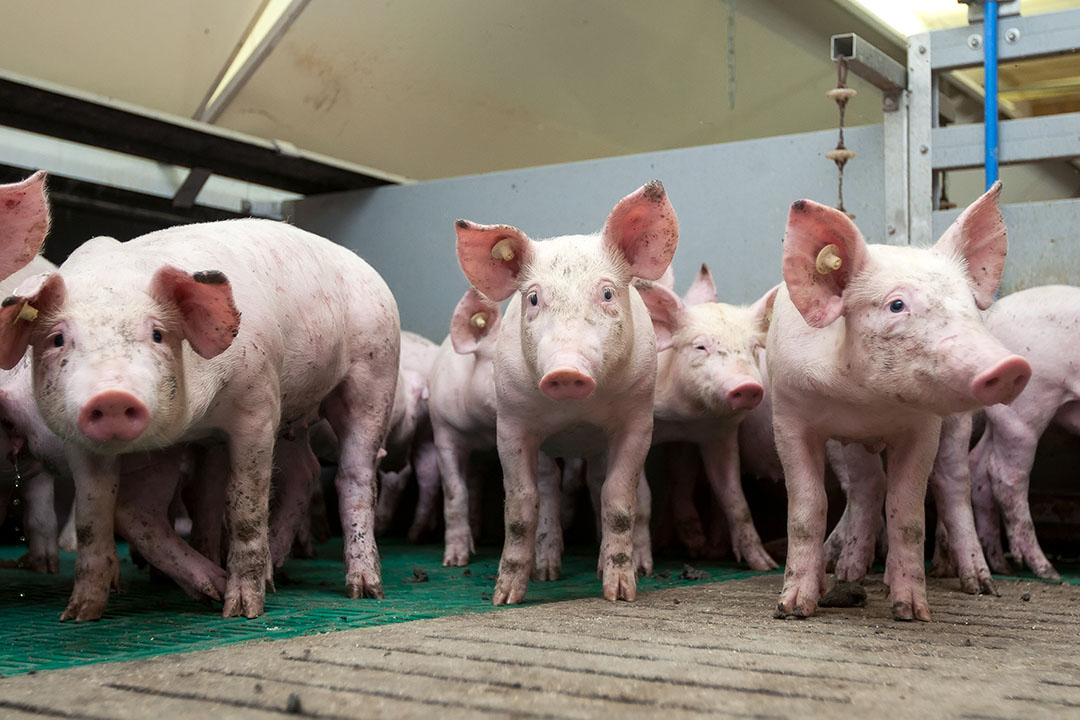Supplementing pig diets with xylo-oligomers and xylanase

Today many US swine producers are using xylanase for its indirect effect on improving liveability and feed efficiency. We explain how xylanase achieves this effect.
Traditionally, xylanases were implemented for nutrient release, which translated into weight gain benefits (4-5 lbs/2-3 kg) and a better feed conversion ratio (by 3 to 4 points). With a 1% mortality benefit estimated to save up to $ 1.50 per pig, many US swine producers are using a xylanase for its indirect effect on reduced mortality and feed efficiency. Mortality has been shown to be reduced by approximately a third by adding a xylanase to the diet. Xylanases break down the long-chain arabinoxylans, releasing nutrients bound by complex fibre structures which would otherwise be excreted. The end products of arabinoxylan degradation can vary, depending on the xylanase, which is probably the result of the enzyme’s effectiveness in breaking down arabinoxylan and other side effects. Although it has been suggested that the complete breakdown of arabinoxylans is advantageous (i.e. more energy is released), the complete breakdown into xylose (X1) has been negatively associated with the digestibility of nutrients. Increasing xylose in the diet results in reduced growth performance and increased water intake, which is probably a mechanism used to flush the xylose from the body. The profile of xylo-oligomers produced by xylanases can differ, depending on the enzyme product and the substrate susceptibility to it. The xylo-oligomers produced may play an important role in maintaining gut functionality when there are health challenges.
Gut functionality
The small-chain xylo-oligomers are fermented by bacteria in the distal gastrointestinal tract, resulting in a shift towards more beneficial bacteria. When xylo-oligomers are fermented by these beneficial bacteria in the lower gut, they produce short-chain fatty acids (SCFA). One of these, butyrate, has beneficial effects on gastrointestinal function, including reducing inflammation and increasing intestinal epithelial integrity. In addition, butyrate has been shown to improve growth performance in production animals, alter the composition of microbiota, and modify the metabolic activity of the microbial ecosystem in the intestine. In the absence – or reduction – of a carbohydrate source in the lower gut, bacteria will become putrefactive, using protein as the primary nutrient source. Protein breakdown leads to increased levels of branched-chain fatty acids (BCFA) and ammonia, and is, therefore, indicative of a less healthy gut. The provision of xylo-oligomers as a result of arabinoxylan breakdown by xylanase supplementation has been shown to reduce BCFA.
Figure 1 – Supplementation of stimbiotic to different stages of pig diets.

Stimbiotic supplementation
The addition of xylo-oligomers directly to animal diets has been explored and several benefits have been demonstrated: better gut integrity; endogenous enzyme; and modulation of the immune response. The inclusion of XOS in weanling pigs’ diets enhances the immune function and improves the growth of the intestinal mucosa layer as well as the diversity of intestinal microbiota. In fact, a diet supplemented with xylanase and a specific XOS will both favorably accelerate and increase the fermentative capacity of the hindgut microbiome. The supplementation of the xylo-oligomers is at a very low inclusion rate, so it cannot simply be a substrate that generates a quantity of end-product. Instead, the low quantity must be signaling the microbiome to use the fibre. It appears that any additive that has the ability to stimulate a fibre-degrading microbiome to increase fermentability without becoming the substrate should be defined as ‘stimbiotic’. Stimbiotic supplementation has been shown to improve performance compared to the control group in both nursery and grow-finish trials (Figure 1). This dual mechanism provides the same positive impacts of added xylanase mentioned above, and then helps speed up that process by providing the xylo-oligomers with a signal for the microbiome to start using the fibre. In studies where this combination was fed to pigs, there was a reduction in tumour necrosis factor alpha, a decrease in branched-chained amino acids, and an increase in the total VFA concentration present in the blood. The pigs consuming this combination were under less stress, maintained a better gut health, and increased fermentation of the positive SCFAs, allowing them to perform better than the control group. A shift can also be observed in the bacteria present in the lower gastrointestinal tract with more beneficial bacteria producing clostridia cluster XIV and bacilli populations, and fewer proteobacteria, including Escherichia coli and Salmonella spp. populations.
Carbohydrase
Carbohydrases are an asset as swine producers and nutritionists implement feeding strategies that can improve the performance and health of the herd. In a recent trial, pigs under a health-challenged system performed better in terms of growth and liveability when a carbohydrase was offered than unsupplemented pigs. However, the carbohydrase response takes some time. By supplementing xylo-oligomers in addition to the carbohydrase, the response time can be reduced and a better response achieved. In a separate trial – with pigs also experiencing a natural health challenge – the pigs received a diet supplemented with both xylo-oligomers and a xylanase and there was an improvement in liveability compared to the control group (96.2% vs 87.6%) and xylanase treatment (91.4%) (Figure 2).
Improved lower gut fibre fermentation has beneficial effects in terms of animal performance, gut function and liveability. Feed additives that stimulate the fermentation of fibre in the lower gut (stimbiotics), such as Signis, can be used to achieve this goal.
Authors:
Laura Merriman, Gustavo Cordero and Pete Wilcock of AB Vista
Join 26,000+ subscribers
Subscribe to our newsletter to stay updated about all the need-to-know content in the feed sector, three times a week. Beheer
Beheer









 WP Admin
WP Admin  Bewerk bericht
Bewerk bericht